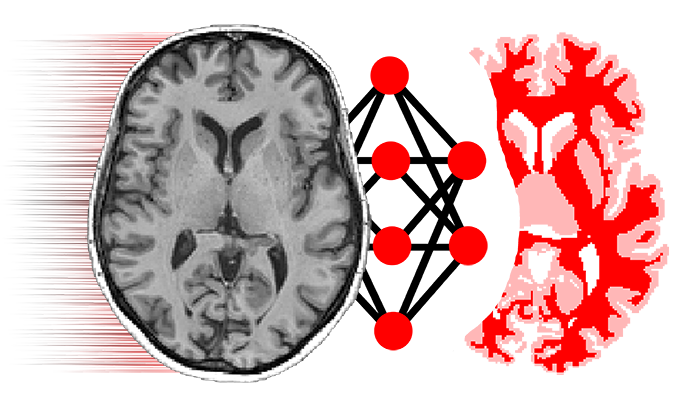niftynet.io.misc_io module¶
-
create_affine_pixdim(affine, pixdim)[source]¶ Given an existing affine transformation and the pixel dimension to apply, create a new affine matrix that satisfies the new pixel dimension.
Parameters: - affine – original affine matrix
- pixdim – pixel dimensions to apply
Returns:
-
rectify_header_sform_qform(img_nii)[source]¶ Look at the sform and qform of the nifti object and correct it if any incompatibilities with pixel dimensions
Parameters: img_nii – Returns:
-
do_reorientation(data_array, init_axcodes, final_axcodes)[source]¶ Performs the reorientation (changing order of axes)
Parameters: - data_array – Array to reorient
- init_axcodes – Initial orientation
- final_axcodes – Target orientation
Return data_reoriented: New data array in its reoriented form
-
do_resampling(data_array, pixdim_init, pixdim_fin, interp_order)[source]¶ Performs the resampling
Parameters: - data_array – Data array to resample
- pixdim_init – Initial pixel dimension
- pixdim_fin – Targeted pixel dimension
- interp_order – Interpolation order applied
Return data_resampled: Array containing the resampled data
-
save_data_array(filefolder, filename, array_to_save, image_object=None, interp_order=3, reshape=True)[source]¶ write image data array to hard drive using image_object properties such as affine, pixdim and axcodes.
-
expand_to_5d(img_data)[source]¶ Expands an array up to 5d if it is not the case yet :param img_data: :return:
-
save_volume_5d(img_data, filename, save_path, affine=array([[ 1., 0., 0., 0.], [ 0., 1., 0., 0.], [ 0., 0., 1., 0.], [ 0., 0., 0., 1.]]))[source]¶ Save the img_data to nifti image
Parameters: - img_data – 5d img to save
- filename – filename under which to save the img_data
- save_path –
- affine – an affine matrix.
Returns:
-
squeeze_spatial_temporal_dim(tf_tensor)[source]¶ Given a tensorflow tensor, ndims==6 means:
[batch, x, y, z, time, modality]
this function removes x, y, z, and time dims if the length along the dims is one.
Returns: squeezed tensor
-
touch_folder(model_dir)[source]¶ This function returns the absolute path of model_dir if exists otherwise try to create the folder and returns the absolute path.
-
image3(name, tensor, max_outputs=3, collections=('summaries', ), animation_axes=(1, ), image_axes=(2, 3), other_indices=None)[source]¶ Summary for higher dimensional images
Parameters: - name – string name for the summary
- tensor – tensor to summarize. Should be in the range 0..255. By default, assumes tensor is NDHWC, and animates (through D) HxW slices of the 1st channel.
- collections – list of strings collections to add the summary to
- animation_axes=[1],image_axes=[2,3] –
